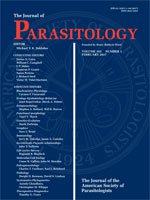Thirty-five adult waterfowl (14 males and 21 females) representing various orders and species were sampled during the hunting season from 2015 to 2016. Antibodies to Neospora caninum were detected by IFAT on blood samples, while heart and brain were subjected to molecular analysis for the detection of Neospora caninum DNA. Twelve birds (34.3%) (6 Anas crecca, 3 Anas platyrhynchos, 2 Anas penelope, 1 Anas acuta) showed antibodies versus N. caninum, while 10 animals out of 35 (4 A. crecca, 2 A. platyrhynchos, 2 A. penelope, 1 A. acuta, and 1 Vanellus vanellus) scored positive for at least 1 DNA sample, with an overall prevalence of 28.6%. The present report shows for the first time the occurrence of antibodies and N. caninum DNA in waterfowl. The avian species investigated in the present report, which feed directly from the soil and/or water, would be able to ingest oocysts excreted by final canid hosts and could contribute to parasite transmission in the sylvatic cycle. To achieve a definitive result about the role of these avian species in the epidemiology of this protozoan, the presence of viable parasites should be demonstrated by bioassay and/or culture, as well as histological evidence of N. caninum cysts in avian tissues.
How to translate text using browser tools
1 February 2017
Neospora caninum in Wild Waterfowl: Occurrence of Parasite DNA and Low Antibody Titers
G. Rocchigiani,
A. Poli,
S. Nardoni,
R. Papini,
F. Mancianti
ACCESS THE FULL ARTICLE
<
Previous Article
|

Journal of Parasitology
Vol. 103 • No. 1
February 2017
Vol. 103 • No. 1
February 2017




